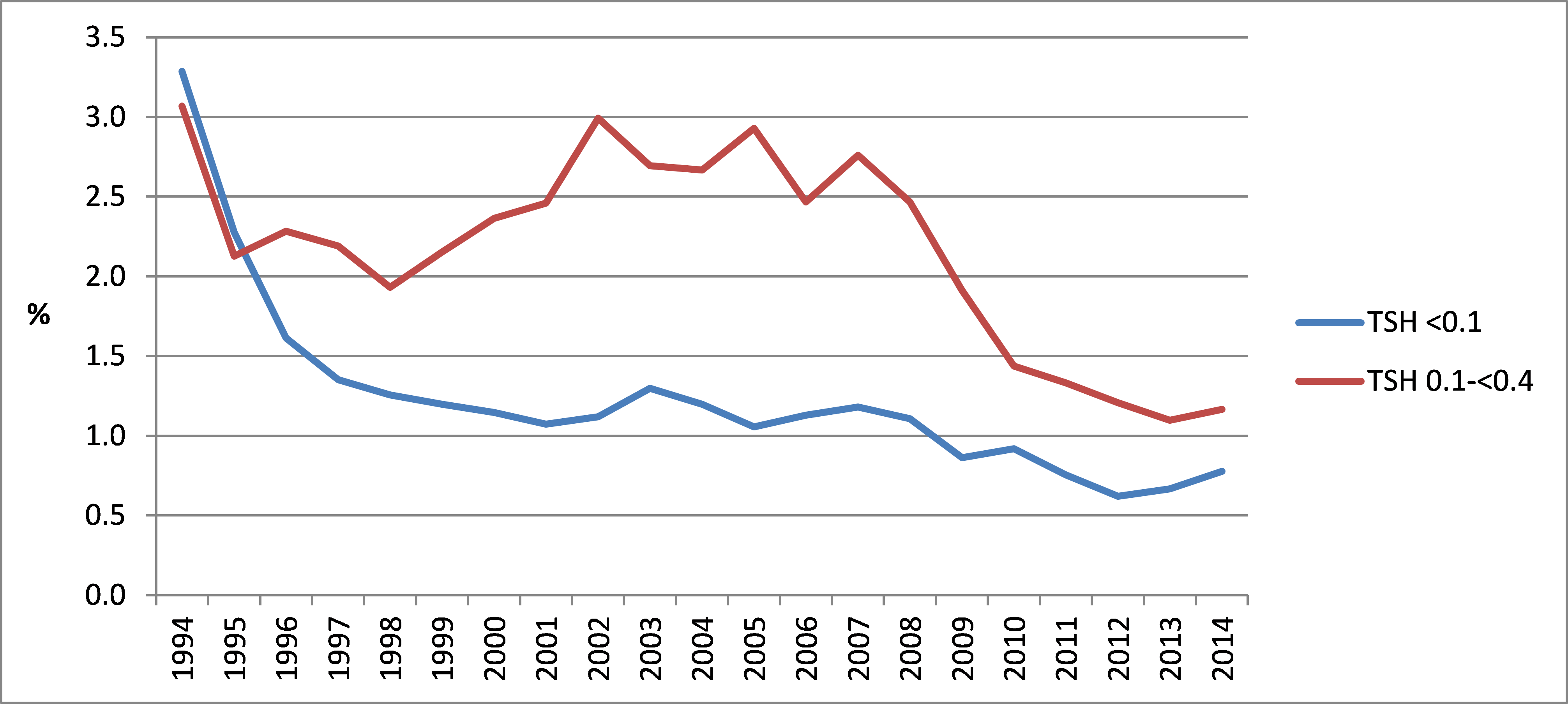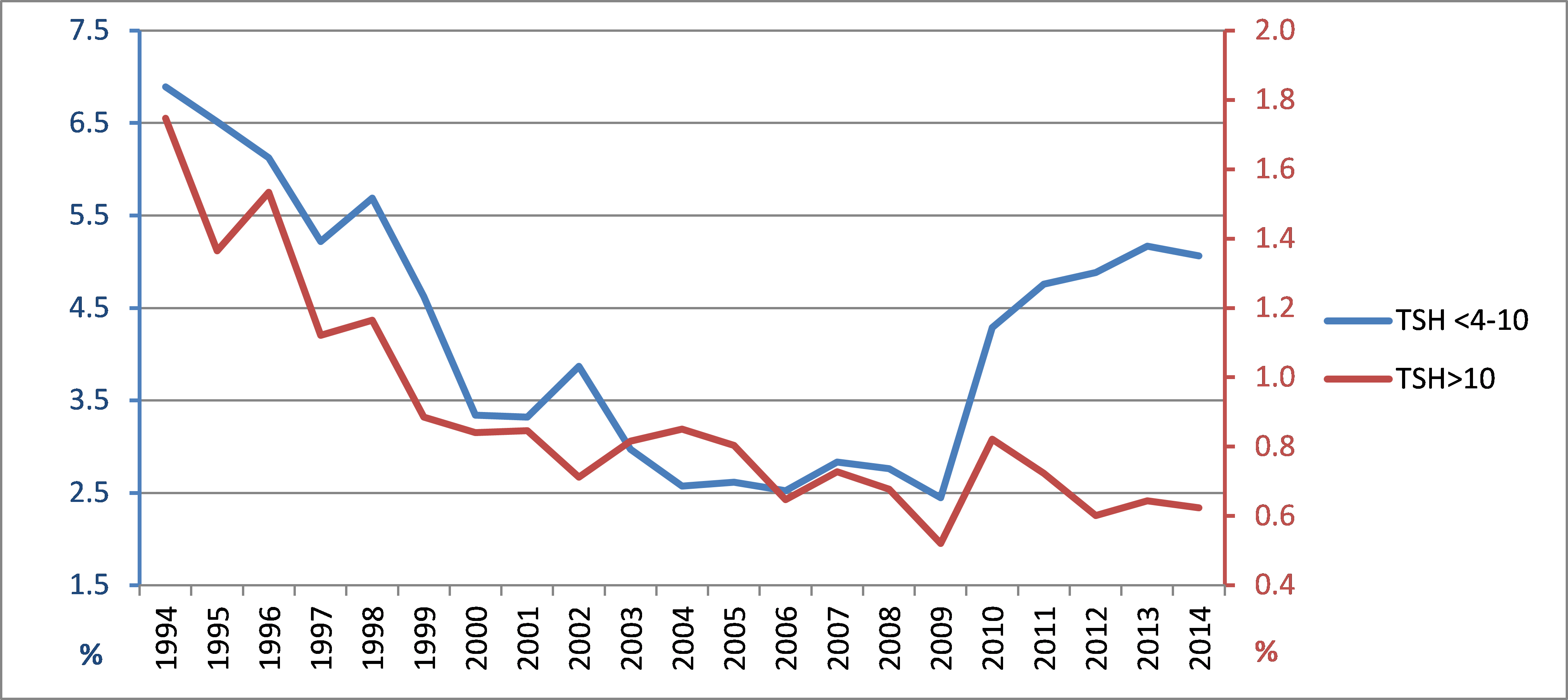Poster Presentation Annual Meetings of the Endocrine Society of Australia and Society for Reproductive Biology and Australia and New Zealand Bone and Mineral Society 2016
Temporal trends in thyroid dysfunction and the impact of iodine fortification in the Tasmanian population (1994-2014) (#377)
Background:
Tasmania has a well-documented history of iodine deficiency during the 1990s, followed by two phases of iodine supplementation; a local voluntary iodine fortification program implemented in 2001 followed by a mandatory national program of iodised salt use in bread-making commencing in 2009[1].
Objective:
To determine temporal trends for thyroid dysfunction and the impact of iodine fortification in Tasmania between 1994-2014.
Methods:
Using data linkage methodology all major pathology laboratories in Tasmania provided TFT data for the period between July 1994 to June 2014. Test results for all individuals undergoing a first TSH assessment during this period were included in the study. TSH results for a total of 411,191 patients were analysed.
Findings:
411,191 individuals had a first time TFT between July 1994 and June 2014 (59.3% female, mean age 45.3 +/- 20.6 years). There is a decline in the incidence of low/suppressed TSH (subclinical and overt hyperthyroidism) across the study period, and a rise in incidence of elevated TSH (subclinical hypothyroidism) beginning in 2010 continuing until the end of the study period (figure 1 and 2).
Conclusions:
The decline in incidence of suppressed TSH is unexpected and we speculate may be due to latent reduction in autoimmune hyperthyroidism associated with changes in iodine nutrition during the 1980s-90s. The increased incidence of TSH elevation in the late 2000s may similarly reflect early evidence of induction of autoimmune thyroid disease due to the rise in iodine nutrition after 2001 and more so after 2009.


- 1. Hynes, K.L., et al., Persistent iodine deficiency in a cohort of Tasmanian school children: associations with socio-economic status, geographical location and dietary factors. Australian and New Zealand Journal of Public Health, 2004. 28(5): p. 476-481.